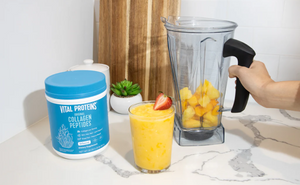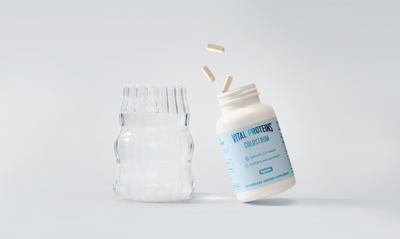You’ve taken the first step and signed up for a gym membership. Now what? The jungle-like assortment of gym equipment can leave some beginners scratching their heads or maybe even avoiding some of it entirely.
Stepping into a gym can be intimidating—so we’re here to help! Don’t let And, our biggest tip: seek advice from a licensed personal trainer. They’ll be able to suggest a workout routine that’s right for you, and make sure you’re using machines properly and choosing the right weight to help you avoid injury and get maximum gains.
How do I choose the right gym equipment?
The biggest reasons people get injured at the gym are because they don’t know how to operate the machine, they have bad form or they add more weight than they’re ready for. Your fitness goals are important, so try not to get overwhelmed. Instead, take a step back and follow our helpful beginner’s guide to using gym equipment until you’ve gotten the swing of things.
What gym equipment should I start with?
Starting simple is always best. If you’re new to any move, you should do the move using just body weight first to get down proper form. Once you’ve mastered that, it’s time to move onto equipment. Here’s where we suggest to start.
Free Weights
One of the most versatile pieces of gym equipment, free weights usually weigh anywhere from 1 to 100 pounds. This wide range of weight options provides the user with many exercise options, and gives you a way to progress in weight as you get stronger. The hard part is determining which exercise to do, how much weight to use, and how many repetitions to perform. Pick a number of reps, such as 8, to start with. Choose a weight that feels slightly heavy, but ensure you can perform all reps with proper form. Once this feels too easy, it’s time to move up in weight!
Start by choosing simple exercises, such as:
- Do squats while holding a set of weights by your sides.
- Do a chest press while lying on a bench.
- Do a single arm row off the bench. To do this, sit with good posture, holding your free weight in one hand while resting the other hand on your thigh. Keeping your upper body straight, bend your elbow and bring the free weight to your hip while keeping your arm and elbow tight against your body.
- Hold a set of free weights against your thighs as you come into a hip bridge.
A warning for beginners: Never swing, toss, or use ballistic movements with the weights. Slow and controlled movements allow you to make the most of your weight training.

Elliptical Machine
If you’re looking for a way to get your heart rate up, lose weight or even to de-stress, the elliptical is a great place to start. Elliptical machines mimic a brisk walk and incorporate your upper body to enhance the workout. Unlike running, it has less impact on the joints, which is helpful when taking a more long-term approach to your training.
Aim for 20 to 30 minutes to start, and set your resistance set at a moderate level. Keep your intensity in check. If you can have a full conversation with the person next to you, you can increase the resistance and/or length of your workout.

Lat Pulldown Machine
While one of the most important machines for building your back muscles, this machine also is one of the most misused machines. The lat pulldown machine focuses on your latissimus dorsi muscles, which are directly below your shoulder blades. They help pull your shoulders back allowing you to have more solid posture.
Begin by setting the weight to something lighter than you might guess would be appropriate for you and add more weight if needed. Sit down at the machine with your knees underneath the secured roller so your thighs are held down in place. Once you’ve made that adjustment, stand up and grab the bar above you. Grip just bar at a shoulder-width distance and pull the bar down toward your breastbone in one fluid motion. Slowly release the weight back up, then pull it down again.
While doing this motion, make sure not to let your shoulders round on the release. Also, it’s very important to never to pull the bar behind your head and neck. This can cause moderate to severe injuries to your neck and rotator cuff muscles.
Related Articles
Leg Press
If you’re new to strength training, stick with strength training machines before you move on to dumbbells and bars. Not only do strength training machines have written instructions on the machine, they are also much more stable, which can prevent injury. The leg press machine works your quadriceps, hamstrings and glutes.
Sit down and adjust the seat so that you start in what looks like the bottom of a standing squat. Place your feet a little wider than hip-width apart on the board with your toes pointed directly up. The knees should be just over the toes and your rear end should be completely in the seat. If you are too close or too far, stop and move the seat.
Adjust the weight to something that would be challenging, but not overwhelming to do for 10 to 15 repetitions. Engage your abs. Now, push through your heels and straighten your legs (without locking your knees out). Once your legs are straight, slowly re-bend the knees but do not set the weight completely down until you are done with all of your reps.
What should a beginner start with at the gym?
Knowing what each machine in the gym does is essential to getting a thorough and safe workout. If you’re not sure, ask a certified fitness professional who can give you tips on proper technique and help you decide which exercises are right for your needs. Free weights, the elliptical machine, the lat pulldown machine and the leg press are just a few of the basics to help you get started. See you at the gym!
Vital Note: This article has been made available for informational and educational purposes only. It is not intended to be a substitute for professional medical advice, diagnosis, or treatment. Always seek the advice of your physician or another qualified health provider with any questions you may have regarding a medical condition. Your licensed healthcare professional can best provide you with the diagnosis and treatment of any medical condition and assist you as well in deciding whether a dietary supplement will be a helpful addition to your regimen.















